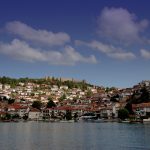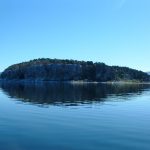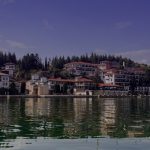Resen is the largest settlement in the Prespa area and we cannot just talk about it, and not mention Prespa, the area that consists of forty villages that surround it.
The whole area has a rich cultural and historical heritage with traces of organized life since the Neolithic. Via Egnatia passed here and King Marko walked, so today the area proudly hosts 130 archaeological sites and 95 churches and monasteries.
On the lake island of Golem Grad you can visit the remains of 7 churches and basilicas from the 4 th or 5 th century with preserved mosaics, and you can see some of the Neolithic and ancient findings in the museum in Resen. Prespa is the site of the creation of the first medieval Macedonian state under the leadership of the comitopols David, Aaron, Moses and Samuel. The former city named Prespa was also the seat of the archbishop of the Autocephalous Macedonian Church before it was moved to Ohrid. In Prespa, Emperor Samuel received the news of the defeat and blinding of his army and died there in great pain.

A special treasure of this area is the monastery church “St. George” (1191) in the village of Kurbinovo, whose frescoes, together with those in Skopje’s “St. Panteleimon” are an impressive example of Byzantine fresco painting. In this church and cultural monument protected by law, you can see the oldest known display of St. Methodius throughout the Slavic world, as well as the exceptional fresco of the archangel Gabriel known as the “angel from Kurbinovo”, which is on the 50 denars Macedonian banknote.
In the historical documents from the 14 th century, a medieval settlement called Rosne appears, which in the 16 th century, however, can be found under the name of Resne. In the 17 th century, according to the records of Evliya Çelebi, within the Ottoman Empire, Resen grew into a kasaba (township) with a bazaar, a dervish tekke, a hammam, an inn and shops. In the 18 th century, this kasaba became a small town, where handicrafts and trade began to develop, and the Resen Bazaar grew into the economic centre of Prespa.

Today in Resen you can still see the old city architecture that is partly reminiscent of houses from European centres. From these Resen buildings, with terraces, pillars, pilasters and friezes, you will feel the spirit of the city that, at the beginning of the 20 th century, its governor Ahmet Niyazi Bey wanted to transform into “Little Paris”. Many buildings remain from that dream, but the most famous is the Niyazi Bey Palace, an imposing neoclassical building, built between 1904 and 1912, according to photographs of buildings in Paris. It is now home to the most important cultural assets of Prespa – museum collections with findings from archaeological sites, works of art by Keraca Visulcheva and works from the famous Resen ceramic colony.
Resen is especially famous for its apples and apple delicacies, and through Prespa to this day you can try traditional recipes such as arshlama, gjomleze, zelnik, pitulici, cironki…
Resen is a place where the spirit of a small environment hovers, which is part of the great story of Prespa and the “Big Water” – the calm Prespa Lake which, although always in the background in terms of Ohrid, has natural power and beauty to conquer from the shadows.







